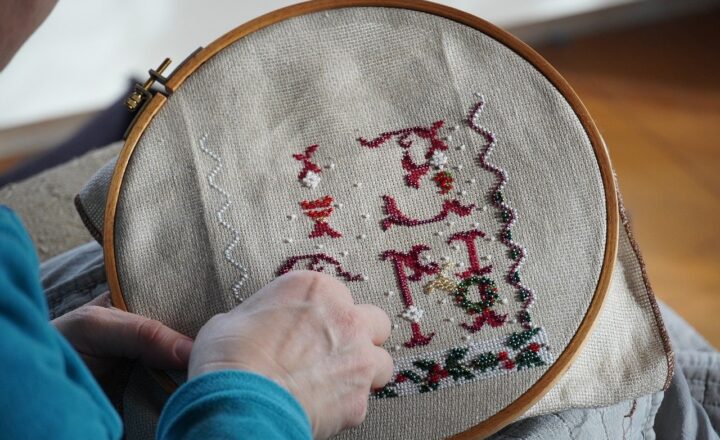From Gardening to Woodworking: Why Hands-On Hobbies Are Making a Big Comeback
November 14, 2024

In our fast-paced and technology-driven world, the simple joy of creating something with our own hands can often feel neglected. However, over the last few years, there has been a significant resurgence in hands-on hobbies such as gardening, woodworking, knitting, and DIY projects. This article explores the various reasons behind this comeback and the benefits these hobbies bring to modern lives.
1. The Therapeutic Benefits of Hands-On Hobbies
Engaging in hands-on activities allows individuals to live in the moment, providing a necessary break from the chaos of daily life. Here are a few therapeutic benefits of these hobbies:
- Stress Relief: Activities such as gardening or woodworking require focus and skill, which can act as a natural stress reliever. The act of creation often leads to a state of flow, calming the mind and bringing a sense of peace.
- Enhanced Creativity: Hands-on hobbies encourage personal expression. When you engage in DIY projects or crafts, you are free to experiment and explore new ideas, broadening your creative horizons.
- Mindfulness: These activities promote mindfulness, as they require you to pay attention to the task at hand and immerse yourself in the process, reducing anxiety and improving overall mental well-being.
By focusing our energy on tangible activities, we can escape the mental clutter that often occupies our minds.
2. The Satisfaction of Creating Something from Scratch
One of the most rewarding aspects of hands-on hobbies is the sense of accomplishment that comes from creating something useful or beautiful from scratch. This satisfaction comes from:
- Tangible Outcomes: Unlike digital tasks, which can sometimes feel unfulfilling, hands-on hobbies provide immediate physical results. Completing a woodworking project or harvesting vegetables from your garden gives a sense of achievement that is hard to replicate in the digital world.
- Skill Development: By practicing these hobbies, individuals develop new skills and improve existing ones. Whether it is mastering the art of planting or learning woodworking techniques, skill acquisition leads to greater self-esteem and confidence.
The joy of seeing something you’ve built or grown allows for a deeper appreciation of the process and boosts overall happiness.
3. Encouraging Community Engagement
Hands-on hobbies don’t just foster individual growth—they also promote community building. Here’s how:
- Social Connections: Many of these hobbies, such as gardening, can be shared in community spaces or with friends and family. This fosters stronger bonds and creates a sense of belonging. Community gardens, for instance, bring diverse groups together, promoting friendship and cooperation.
- Skill Sharing: Workshops and classes focusing on woodworking, knitting, or pottery allow enthusiasts to share their skills and knowledge, creating a collaborative environment. This helps preserve traditional crafts while also empowering others to learn new skills.
By engaging in these hobbies together, we not only cultivate our interests but also build valuable relationships.
4. Sustainability and the Movement toward Self-Sufficiency
In today’s climate-conscious world, many individuals are looking for ways to live more sustainably. Hands-on hobbies play a crucial role in this movement:
- Gardening: Growing your own fruits, vegetables, and herbs reduces the carbon footprint associated with store-bought produce. Home gardening promotes local food systems and encourages individuals to become more self-sufficient.
- Recycling and Upcycling: Woodworking projects can often utilize reclaimed wood, reducing waste and the need for new materials. This practice not only saves resources but also inspires creativity in reimagining what can be created from old items.
As hands-on hobbies become more popular, more individuals are embracing self-sufficiency, reshaping how consumers think about resources and sustainability.
5. The Revival of Craftsmanship and Traditional Skills
In an age dominated by fast fashion and mass production, the revival of craftsmanship and traditional skills is crucial:
- Value of Craftsmanship: Many people are recognizing the uniqueness and quality of handcrafted items over mass-produced goods. The appreciation for artisanal products is on the rise, emphasizing the value of labor and skill involved in creating each item.
- Legacy of Skills: By participating in hands-on hobbies, we preserve traditional crafts and techniques that risk being forgotten. Sharing this knowledge helps keep these practices alive for future generations.
Craftsmanship is making a triumphant return, encouraging individuals to prioritize quality over quantity, and reaffirming the importance of skills handed down through generations.
Conclusion
The resurgence of hands-on hobbies like gardening and woodworking reflects a desire for meaningful engagement in a world focused on speed and digitization. These pursuits provide therapeutic benefits, a sense of accomplishment, opportunities for community building, and a commitment to sustainable living practices. Whether you’re planting a vegetable garden or creating handcrafted furniture, embracing your skills can lead to significant personal and communal fulfillment. Let’s keep the spirit of creativity alive and celebrate the joy of hands-on hobbies in our lives today.
Engaging in activities that connect us physically to the task at hand enrich our lives in ways that screens cannot replicate. In this renaissance of craftsmanship and self-expression, we can all find our place, whether as a novice or a seasoned artisan. The tools are waiting—let’s create something beautiful together.






